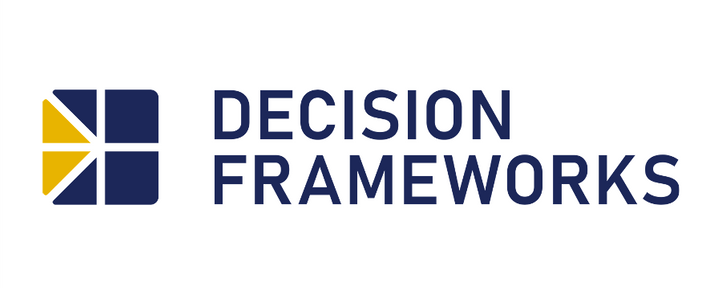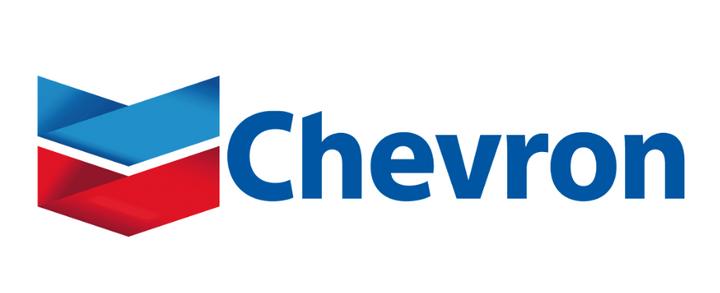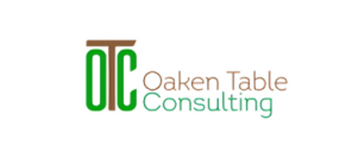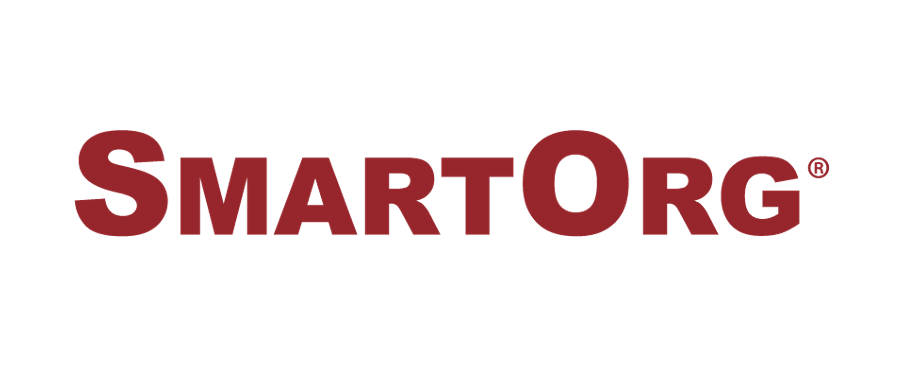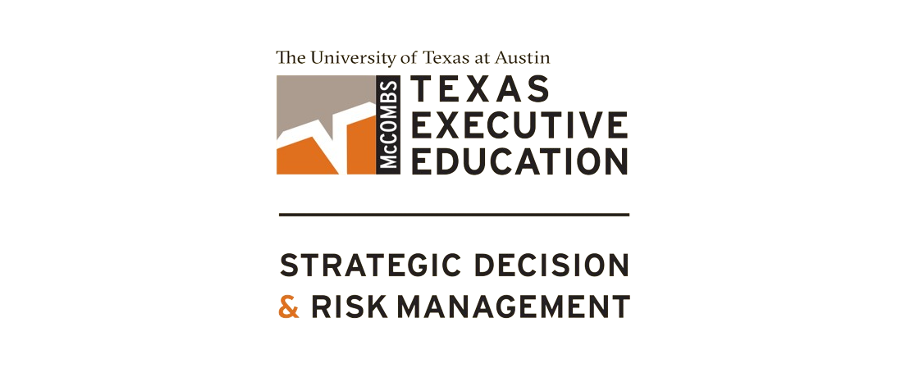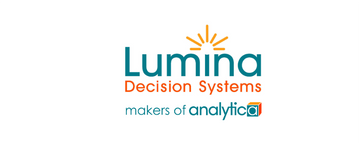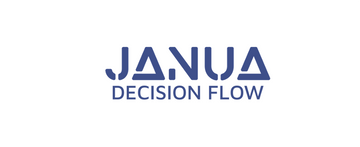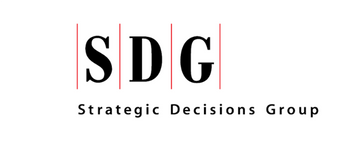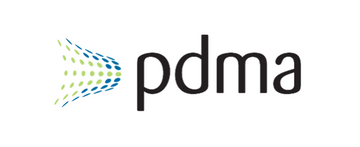Day 2 Agenda & Speakers
April 17, 2024
The information presented in this publication, including but not limited to the 2024 SDP Annual Conference agenda, is subject to change without prior notice. While every effort has been made to ensure the accuracy and timeliness of the details provided, unforeseen circumstances, scheduling adjustments, or other factors beyond our control may impact the final agenda.
Attendees are advised to regularly check the official conference website, communication channels, and announcements for the most up-to-date information. SDP reserves the right to modify, add, or remove sessions, speakers, or any other aspects of the conference program as deemed necessary.

SDP Hero Awards
April 17, 2024 8am - April 17, 2024 8:30am
Session 1

AI / Analytics
Factoring probabilistic evaluations in traditionally qualitative multi-attribute decisions, such as plant turnarounds
April 17, 2024 8:30am - April 17, 2024 9:15am
Click here to download PDF copy of presentation
Co-Presenting: Luis Mendoza (Decision Frameworks), Ellen Coopersmith & Ashley Corso (Decision Frameworks)
Abstract:
What is the true cost of a plant turnaround? How can we better inform our decision when selecting a plant turnaround strategy?
Plant turnarounds are scheduled plant shutdowns in which preventive maintenance and equipment upgrades are conducted in order to ensure safe and compliant operation, improve competitiveness, etc. Teams are often tasked to think strategically about which improvements, beyond the required maintenance, will better position the company to gain competitive advantage and thrive in changing market conditions. However, this strategic thinking often focuses on qualitative multi-attribute analysis to reach consensus and ignores probabilistic quantitative evaluations to better illustrate the trade-offs between competing strategies.
moreStructuring Portfolio Analysis and Management to Achieve High Decision Quality
April 17, 2024 9:15am - April 17, 2024 10am
Click here to download PDF Copy of Presentation
Speaker: Tony Kenck (Practical Portfolio Management)
Abstract:
Implementing portfolio management in an organization, whether as a one-off study or an ongoing practice, is challenging. One daunting aspect involves selecting the best choice of portfolio analysis method.
Multiple definitions of portfolio analysis exist—whether standalone analysis, ranking by a single variable, multi-axis graphs and bubble charts, simulation, or optimization all the way to stochastic optimization. I will describe and explain a framework tied to decision quality to help drive productive discussions and expectations.
Twenty-plus years ago, many portfolio practitioners believed that only three factors were needed to enable portfolio management: data, computing power, and visualization. My framework adds two more elements: frame and management commitment. The framework is similar to the SDG six-factor DQ framework, but alternatives smear across data and the computing model (logically correct reasoning). Visualization is an integral part of values and trade-offs.
more
Org Transformation
Panel Discussion: Building (and keeping) a Mandate
April 17, 2024 8:30am - April 17, 2024 9am
Moderator: Leslie Lippard (Alnylam Pharmaceuticals)
Panelists: Terry Karner (Astellas Pharma), Charles Persinger (Eli Lilly) & Jennifer Harrington
moreLooking beyond the 95%: A New Data-Driven Framework to Assess Regulatory Approval Risk
April 17, 2024 9am - April 17, 2024 9:30am
Click here to download PDF copy of presentation
Speakers: Lan Ding (GSK) and Co-presenting Eric Johnson (GSK)
Abstract:
Regulatory approval plays a pivotal role in drug development, yet reliance on aggregate industry approval rates can mask compound-specific risks. To guide more informed decision-making, GSK pioneered a robust framework that systematically captures regulatory risks and opportunities on a customized, per program basis.
Spearheaded by Lan, a cross-functional team spanning statistics, decision science and global regulatory leaders overcame organizational barriers to design the new evaluation framework. Implementation required persuading stakeholders to adopt more granular, data-driven risk evaluation despite fundamental changes to existing processes.
The session will detail learnings from the 12-month journey. How do you drive adoption of value-added but disruptive change? What objections were raised against augmenting models perceived as sufficient? How did emphasizing decision quality over motives shift mindsets? The team strived for enhancements offering better capital allocation and patient impact – come hear how.
moreFireside Chat | Key Success Factors for Implementation of Enterprise Decision Software
April 17, 2024 9:30am - April 17, 2024 10am

Innovation
Organizational Alignment and Optimization of Resource Allocation to Conservation Goals
April 17, 2024 8:40am - April 17, 2024 8:55am
Click here to download PDF copy of presentation
Authors: Ellen Pero, Riley Andrade, Randy Wilson, Laura Brandt, Todd Jones-Farrand, Conor McGowan
Speaker: Laura Brandt (U.S. Fish & Wildlife Service)
Abstract:
Efficient use of assets in natural resource conservation is important given increasing demand (i.e., conservation need) and limited funding. Allocating organizational resources across large federal conservation agencies can be challenging due to large geographic scopes of responsibility, multiple and potentially competing agency objectives, mandated legal constraints, as well as uncertainty in outcomes relative to variable resource inputs and personnel performance. We adopted a values-based, structured decision-making approach and PrOACT framework with the Science Application and Migratory Bird Program (SAMB) within the US Fish & Wildlife Service’s (USFWS) Region 4 to develop an organization-wide objective hierarchy and programmatic metric set to align organization expenditures and actions toward conservation goals. We used expert elicitation to inform a stochastic, constrained-optimization model to provide decision-support for allocation of agency full-time equivalents (FTEs) to maximize SAMB conservation value in the southeast US. We highlight sensitivity of the decision-support tool to shifting agency priorities, and we demonstrate additional tool applications relative to evaluation of SAMB conservation value in the southeast under relaxed legal constraints, shifting FTE allowances, and alternative organizational priorities.
morePrioritization of Species Status Assessments for Decision Support
April 17, 2024 8:55am - April 17, 2024 9:10am
Click here to download PDF copy of presentation
Authors: Ashley Goode, Erin Rivenbark, Jessica Gilbert, Conor McGowan
Speaker: Ashley Goode (University of Florida)
Abstract:
Species status assessments are used to inform U.S. Fish and Wildlife Service (USFWS) decision-making for Endangered Species Act (ESA) classification decisions, recovery planning, and more. The large number of species that require assessment and uncertainty in the data available impede the process of assigning and completing the assessments, which makes creating a multi-year work plan extremely difficult. An optimized triaging system that maximizes the use of the best available information, while managing the complex ESA workload and meeting deadlines, is necessary. We used a structured decision-making framework to approach the problem with the goal of creating a prioritization tool that would be effective at scheduling assessments, given the best information available and priorities of the Service. We collected data on the species awaiting assessment and developed a value function that incorporates existing deadlines, taxonomic uncertainty, and controversy of the species, and population and habitat data availability and quality. We used a constrained linear optimization algorithm to maximize the value function and ensure that workload capacity was not exceeded. Comparison of model scenarios indicates that imposed deadlines impact the model more than capacity constraints. Additionally, differential weighting of the metrics significantly affected the outcome of the model. In the future, elicitation of metric weights should be done routinely before the model is run for use in official planning to ensure 3 alignment with current USFWS priorities. Output from this optimization can be used to inform a five-year work plan, allocate resources, and discuss workforce decisions.
moreOptimizing Conservation Actions to Recover Sensitive Species Across Maui Nui
April 17, 2024 9:10am - April 17, 2024 9:25am
Click here to download PDF copy of presentation
Authors: Melissa R. Price, Kristen C. Harmon, Abbey Camaclang, Tara Martin, Scott Fretz
Speaker: Kristen Harmon (University of Hawai'i at Mānoa)
Abstract:
With hundreds of species at risk and on the brink of extinction, conservation practitioners must decide where to focus effort and which conservation actions to implement given limited funds. Decision processes that aim to maximize conservation benefit for a given cost should address complementarity of actions to ensure that species in low-diversity habitats are not excluded, and both cost and effectiveness of different actions across taxonomic groups. To address this need we modified a Priority Threat Management approach to guide resource allocation decisions for the conservation of biodiversity in Maui Nui (the islands of Maui, Moloka‘i, Lāna‘i, and Kahoʻolawe). Over a series of online meetings and in-person workshops, species experts and conservation managers contributed: (1) key threats to sensitive species; (2) management strategies to address key threats; and (3) expected cost, feasibility, and benefit of management strategies. Elicited data were analyzed to identify strategies that would provide 3 optimal gains in recovery across multiple taxonomic groups given costs and feasibility. Predator control and fencing were both identified as cost-efficient actions with the greatest gains in recovery across taxonomic groups, but those actions alone were not effective at recovering many plants and invertebrates. Participants emphasized the importance of investing in research and development of novel techniques to address persistent problems such as avian malaria, pests, and diseases. Further, despite the high initial cost of landscape-scale control of invasive species, participants highlighted the importance of long-term benefits. Findings from this study will improve both the efficient use of existing funds, and competitiveness for increased resources needed to achieve recovery.
moreVisualizing and communicating 'Decision Space' - the role of risk assessments in informing management decisions
April 17, 2024 9:25am - April 17, 2024 9:40am
Click here to download PDF copy of presentation
Author: Jonathan Cummings
Speaker: Jonathan Cummings (US Fish & Wildlife Services)
Abstract:
In the absence of information about risk and without any consideration of risk tolerance, when making a risk management decision, individuals could reasonably select any action from a set of possible actions. Their 'decision space' is not in any way limited in this circumstance. However, a risk assessment or a determination of risk tolerance should make some possible actions less reasonable than others, which constricts the decision space available to decision makers. To help decision makers understand the role of a risk assessment and risk tolerance in risk management decisions, I developed an interactive R Shiny application that displays reasonable decision space. The decision space is modified by inputs of risk assessment (from scientific assessments or expert elicitation) and inputs of risk tolerance (from policy makers or decision makers). My visualization tool aims to help decision makers understand the role of scientific analyses that produce risk assessments, as well as the role of policy that produces risk tolerance in defining the decision space and the best actions to take given the decision context.
moreQuestion and Answer and Facilitated Discussion with Speakers
April 17, 2024 9:40am - April 17, 2024 10am
Facilitated by: Laura Brandt (US Fish & Wildlife Services)
moreSession 2

Innovation
The practical and accessible application of Game Theory to strategic decision making
April 17, 2024 10:30am - April 17, 2024 11:15am
"Presentation not available"
Speaker: Dave Debacker (Open Options) & Christa Roemkens (Chevron)
Abstract:
This presentation will focus on the practical application of Game Theory to complex, multi-stakeholder, strategic decision-making. This session will be applicable to both technical and non-technical streams/attendees.
Using past project examples, Christa & Dave will share their thoughts on the experience and insights generated by using a preference-based game theory approach when dealing with highly complex, intractable problems. This involves using proven analytical methods and tools to consider the actions and reactions of key stakeholders - these could be competitors, regulators, customers, partners, suppliers, or any other party with the ability to materially impact a situation. It is important to note that this is a qualitative approach driven by challenging and constructive discussion, not cash flow modeling. The speakers will touch on the unique advantages and benefits in terms of efficiency, mitigating bias, managing uncertainty, aligning decision-making teams, and increasing decision speed. They will also explain how the synchronous and asynchronous elements work together and leverage the complementary roles of the client organization and the external consultant.
moreUsing Conversational Swarm AI for Optimized Group Decision Making
April 17, 2024 11:15am - April 17, 2024 12pm
Click here to download PDF copy of presentation
Speaker: David Baltaxe (Unanimous AI)
Abstract:
Making smart decisions is critically important to every organization. So how can we use AI to improve the decision-making process? Some companies are using generative AI to replace people with data- and algorithmic-driven decisions, but this takes people out of the loop and often leads to suboptimal results. At the 2023 SDP conference, we showcased a new technology called Swarm AI, which integrates humans and AI and connects groups of people together and amplifies their combined intelligence. Based on the remarkable properties of biological swarms, Swarm AI empowers networked human teams to quickly tap into their combined knowledge, wisdom, and insight to generate more accurate forecasts, estimations, and predictions. This leads to better, smarter decisions. The newest iteration of Swarm AI, called Conversational Swarm AI (CSI), represents a dramatic improvement. Unlike previous versions, CSI allows groups of any size to converse naturally using text chat and allows for answering open-ended questions and solving unstructured problems. This talk will review how CSI works and exciting commercial applications for the energy sector.
more
AI / Analytics
Pharmaprojects: How it can be used from Business to Research
April 17, 2024 10:30am - April 17, 2024 11am
Click here to download PDF copy of presentation
Speaker: Harrison Miller (Alnylam Pharmaceuticals)
Abstract:
Probabilities of success are a key assessment for decision analytic strategy and portfolio models in drug development. Various studies have analyzed historical data using different methodologies and different data sets, but many of these are significantly out of date or are based on limited data sets. This talk will review an attempt to reproduce a landmark paper with a comprehensive, up-to-date data set, and will highlight several key learnings about the nuances, methodologies, data sets, changes over time, and how/when this information can be best leveraged in the context of drug development decision making.
moreSimple Bayesian Reference Class Forecasting for Binary and Continuous Business Variables
April 17, 2024 11am - April 17, 2024 11:30am
Click here to download PDF copy of presentation
Speaker: Shaun Comfort (Genentech, Inc.)
Abstract:
Various industries generate forecasts to facilitate portfolio investments and decision-making. Typical examples in pharma include binary probability of success estimates for clinical trials and peak sales estimates. The vast majority of these forecasts are generated using subject matter experts and/or quantitative models using detailed information about the project(s) under consideration. From the Heuristics and Biases perspective, these forecasts are based on an “inside view” of projects resulting in predictions that are non-regressive and miscalibrated, relative to actual outcomes. In 1977, Daniel Kahneman and Amos Tversky published a paper outlining a simple corrective procedure for combining inside-view forecasts with distributional data from relevant outcomes, to produce plausible forecasts that are closer to actual results. This approach termed has been termed “reference class forecasting” Flyvbjerg (2011). For this presentation, Dr. Comfort presents a simple Bayesian reformulation of Kahneman and Tversky’s approach to update inside-view forecasts with prior information to produce posterior probability distributions for binary and continuous business variables. He illustrates this with a practical example from his recent article in Foresight Issue #72 (https://forecasters.org/foresight/issues/) to generate posterior estimates of clinical program probability of success and 5-year peak revenues, from initial inside-view forecasts.
morePlatform Trial Designs for Sequential Treatment Evaluation
April 17, 2024 11:30am - April 17, 2024 12pm
Click here to download PDF copy of presentation
Speaker: Alex Kaizer (University of Colorado Anschutz Medical Campus)
Abstract:
The potential strengths of platform trials have been elucidated for oncology, infectious diseases, and other settings. In this talk we first present the lessons learned from a sequential platform trial used in the West Africa Ebola virus disease outbreak and how these may translate to the context of oncology research. For example, one shortcoming of the original design was that supplemental information from controls in previous trial segments was not utilized. We address this limitation by proposing an adaptive design methodology that facilitates information sharing within the trial. The design also allows the use of multisource adaptive randomization to target information balance within a trial segment if other segments of data are incorporated. Compared to the standard design, we demonstrate that MEMs with adaptive randomization can improve power with limited type-I error inflation. We conclude by discussing some of the future directions and potential applications of newer methodologies and applications for platform trial designs that both include and extend the lessons learned previously.
more
Org Transformation
Institutionalizing Collaboration and Multi-objective Decision Making in Water Resources Planning Processes within the Corps
April 17, 2024 10:30am - April 17, 2024 10:50am
Click here to download PDF copy of presentation
Authors: Michelle Hilleary, Hal Cardwell, Michael Deegan, Igor Linkov, Chris Cummings, Kat McCain
Speakers: Michelle Hilleary & Hal Cardwell (U.S. Army Corps of Engineers)
Abstract:
Collaboration in water resources management in the U.S. Army Corps of Engineers (USACE) has benefited from sustained strategic investment and network nurturing. Recent policy directives to look more comprehensively across categories of benefits are moving the Corps to employ more multi-objective decision making techniques in the tradeoffs analysis step of the Civil Works planning process. Applying collaborative techniques in tradeoffs analyses will facilitate better decision-making and increased realization of benefits in the public sphere.
moreExpanding tools and perspectives to include ecosystem service concepts in Superfund site management decisions
April 17, 2024 10:50am - April 17, 2024 11:05am
Click here to download PDF copy of presentation
Authors: Leah M. Sharpe, Matthew C. Harwell, Jim Harvey, Tammy Newcomer-Johnson, Gina Ferreira, Stephanie Kim, Bruce Pluta
Speaker: Leah Sharpe (US Environmental Protection Agency)
Abstract:
The U.S. Environmental Protection Agency’s (EPA) Superfund program is responsible for the assessment, cleanup, and reuse of some of the most contaminated sites in the United States. The primary goal of Superfund work is to protect human health and the environment and the work itself is regulatorily and legislatively proscribed. While the concept of ecosystem services (ES; i.e., the benefits that humans receive from nature) is not a part of Superfund processes, the EPA identified potential connections between ES concepts and remediation and redevelopment of contaminated sites in 2009 and has been applying those concepts in cleanups for over a decade. In addition to regulatory hurdles, the organizational separation of those developing ES tools and those responsible for managing Superfund sites was another challenge to the incorporation of ES concepts in management actions. An ongoing collaboration between tool developers, modelers, risk assessors, and project managers, co-led by researchers focusing on ES tools and risk assessors focused on contaminated site management, has made meaningful progress in incorporating ES concepts and tools in contaminated site cleanup and reuse. These advances include developing generic guidelines for incorporating ES into ecological risk assessments, identifying the value-added aspects provided by incorporation of ES, developing ES tools in response to manager needs, identifying concrete steps to support Superfund staff in effective incorporation of ES tools into their work processes, and conducting multiple case studies as practical demonstrations of this incorporation. This presentation will discuss how this collaboration works, the co-development of decision tools and frameworks, and how the incorporation of ES concepts impacted outcomes in case study examples.
moreStructured Decision-Making Framework for Managing Cyanobacterial Harmful Algal Blooms in New York State Parks
April 17, 2024 11:05am - April 17, 2024 11:20am
Click here to download PDF copy of presentation
Authors: Jennifer L. Graham, Gabriella Cebada Mora, Rebecca M. Gorney, Lianne C. Ball, Claudia Mengelt, and Michael C. Runge
Speaker: Jennifer Graham (USGS)
Abstract:
Cyanobacteria increasingly are a global water-quality concern because of the potential for these organisms to develop harmful blooms that affect ecologic, economic, and public health. Cyanobacterial harmful algal blooms (CyanoHABs) can lead to a decrease in water quality and may affect the recreational and ecological benefits of parks that include lakes. The New York State Office of Parks, Recreation and Historic Preservation (OPRHP) is a state agency charged with the operation of state parks and historic sites. Many New York State parks include lakes or other freshwater bodies, which can be susceptible to CyanoHABs. The OPRHP faces difficult decisions regarding prevention of and response to CyanoHABs. Decision analysis is often used to inform complex decisions regarding natural resource management. Structured decision making (SDM) breaks down complex decisions into their basic parts and reconstructs the problem into a framework that allows for collaborative examination and development of suitable actions. The U.S. Geological Survey partnered with OPRHP and the New York State Department of Environmental Conservation to develop a SDM template for managing CyanoHABs in OPRHP parks. Two parks, Moreau Lake State Park and Rockland Lake State Park, served as case studies to motivate and test the template. This presentation will describe how the principles of SDM can be used to navigate the challenges associated with managing CyanoHABs using the case studies as examples. Management objectives and strategies for CyanoHABs in OPRHP parks, strategies to evaluate consequences and manage trade-offs, and potential challenges to the implementation of preferred alternatives will be discussed.
moreResource allocation for invasive species management on National Wildlife Refuges lands in the Midwestern United States
April 17, 2024 11:20am - April 17, 2024 11:35am
Click here to download PDF copy of presentation
Authors: Angela Romito & Max Post van der Burg
Speaker: Angela Romito (U.S. Fish and Wildlife Service)
Abstract:
A team comprised of United States Fish & Wildlife Service National Wildlife Refuge System (US FWS NWRS) biologists and refuge managers worked collaboratively to develop a transparent, coordinated process to allocate annual invasive species funding, better leverage relevant resources, and reduce the impact of non-native species, in turn, facilitating achievement of biological integrity, species diversity, and environmental health across the Midwest US FWS NWRS. They constrained their work to reflect refuge capacity for project implementation, variability in station priorities, adherence to funding directives, and relevant law and policy. Five fundamental objectives were identified by the team including, 1) maximizing the condition of refuge species of concern and their associated habitats, 2) project success, 3) efficiency, 4) maximizing the number of refuges that benefit from allocation and, 5) partner and landowner acceptance. To assess how well proposed projects performed relative to these objectives, measurable performance measures (15 total) were identified for each objective. A request for proposal (RFP) system was used to solicit projects from 70 Refuge Complexes and Wetland Management Districts across the Midwest NWRS. To reduce administrative burden, and subjectivity in proposal review, the RFP was designed (via Microsoft Forms) to allow proposal authors to score their projects according to the criteria selected by the model development team. The decision aid was used to produce four project portfolios, along with predictions of their expected conservation benefits, for consideration by regional decision-makers. The optimal portfolio resulted in the most projects funded and the highest cumulative conservation benefit. Decision-makers collectively chose to allocate funds to the projects in the optimal portfolio. The decision tool, along with the RFP system, will be used to allocate these funds in future years.
moreQuestion and Answer and Facilitated Discussion with Speakers
April 17, 2024 11:35am - April 17, 2024 12pm
Facilitated by: Katrina Alger (US Geological Survey)
moreSession 3

Org Transfromation
The Challenges and Lessons of Developing a Sustainable Decision-Making Culture
April 17, 2024 1pm - April 17, 2024 1:45pm
Click here to download PDF copy of presentation
Co-Presenting: Christa Roemkens, Mike Benefiel & Ellen Vernotzy (Chevron)
Abstract:
Creating a sustainable decision making culture is a continuous work-in-progress. Just as businesses and industries evolve to adapt to changing drivers, so the decision making culture must adapt too. It is shaped as much by a company's specific culture as by the trends in general and project management philosophy. Inevitably, components put in place with the best intentions take on a life of their own and can become obstacles rather than enablers of efficient and effective decision making. The response is often to blame the tools, rather than how they are being used - leading to a cycle of periodic upheaval that seldom leads to the desired improvements. How can we break this cycle? (Spoiler alert - there is no silver bullet).
moreBridging the Gap – Translating Behavioral Economics Research to Daily Practice
April 17, 2024 1:45pm - April 17, 2024 2:30pm
Click here to download PDF copy of presentation
Speaker: Alison Zabik (Exxon Mobil)
Abstract:
As Decision professionals, we are designers. We craft and shape the elements of decision quality to support decision makers and stakeholders, in pursuit of organizational objectives. Decision professionals are obligated therefore to design and customize decision processes in support of the human needs of the decision maker and in consideration of the organizational behavior context of the enterprise.
This talk will translate behavioral economics literature into a decision quality practice. Focus will be on practical techniques that incorporate academic insights, such as mental accounting, time discounting and choice bracketing, into the day-to-day practice of decision quality. This talk will also briefly touch on organizational context ideas, translating insights from public policy literature to applications of decision quality practice in a multinational oil and gas context.
more
Innovation
Learning about Clinical Trials with Causal Inference and Causal Discovery
April 17, 2024 1pm - April 17, 2024 1:30pm
Click here to download PDF copy of presentation
Speaker: Gary Summers (GSK)
Abstract:
We’ve all heard that statistic’s mantra, “Correlation does not equal causation.” However, causal inference, a new set of statistical techniques, can identify causal relationships from data. Amazingly, it can derive experimental results and counterfactuals from observational data. DAGs, directed acyclic graphs, similar to influence diagrams, are the heart of causal inference. Using ten years of publicly available clinical trial data, Intelligencia and GSK are creating a DAG and studying causation in clinical trial designs, a prelude measuring the impact of decision choices, such as how enriching trials with patient selection biomarkers impact a trial’s probability of success. This presentation will introduce causal inference, DAGs, and our early results.
moreDynamic Framing for Strategic Games in Biopharma
April 17, 2024 1:30pm - April 17, 2024 2pm
Click here to download PDF copy of presentation
Speakers: Steve Galatis & Paul Papayoanou (Decision Frameworks)
Abstract:
In many situations, the decisions of biopharma companies are interdependent with those of competitors and partners. Co-marketing and licensing deals, and other M&A transactions, require negotiation of win-win agreements. Launch strategy, pricing and market access, and in-market positioning, meanwhile, are best developed by thinking through complex action-reaction dynamics and key uncertainties. For such situations, game theory is the most appropriate tool, and Strategic Gaming is a practical application that is an extension of traditional decision analysis. When we frame issues and opportunities with Strategic Gaming, we need to capture the dynamics of interactions between two or more companies. The Dynamic Framing approach involves development of a game tree that incorporates the decisions of each of the key “players” and often the resolution of key uncertainties as well. We illustrate this approach with a case example in which a company can choose to build up its own sales force or negotiate a licensing agreement with another biopharma company.
moreCraftsmanship in Pharmaceutical Portfolio Management
April 17, 2024 2pm - April 17, 2024 2:30pm

AI / Analytics
Roles and limitations of artificial intelligence and machine learning for the management of natural resources
April 17, 2024 1pm - April 17, 2024 1:25pm
Click here to download PDF copy of presentation
Speaker: Julien Martin (US Geological Survey)
Abstract:
Applications of artificial intelligence (AI) and Machine learning (ML) techniques to ecological research and management are growing rapidly. These techniques have the potential to increase the efficiency of data collection and analyses of ecological data to help inform management decisions. In this session, we will discuss the benefits and limitations of these methodologies for natural resource management. More specifically, we will examine the roles and limitations of AI and ML in the context of structured decision making. Structured decision making (SDM) for natural resource management is a method for analyzing a decision by decomposing the problem into components, which include: (1) management objectives; (2) potential management actions; (3) models to project the consequences of actions; (4) optimization methods and (4) monitoring. We will talk about the benefits that AI/ML can bring in the context of SDM, with a particular focus on the following components: models, optimization and monitoring. Examples of successful applications of AI/ML include image analysis and the processing of acoustic data to identify species or matching individuals. In turn this identification process can be used to model vital rates, abundance and distribution of organisms. The accounting of imperfect detection and misclassification errors is important for reliable inference from data collected or processed with AI/ML. We will describe SDM and adaptive management cases studies that could benefits from AI/ML techniques. Finally, we will discuss the challenges and limitations of applying AI/ML to natural resource management.
moreWhich came first: the data or the decision? How AI/ML helps the USGS deliver decision-agnostic water data that informs every link in the decision quality chain
April 17, 2024 1:25pm - April 17, 2024 1:45pm
Click here to download PDF copy of presentation
Speaker: Katrina Alger (US Geological Survey)
Abstract:
The USGS has long been synonymous with delivering accurate and reliable observed water data through its extensive national networks of stream gages and hydrologic experts. The bureau has no management authority and instead partners with a wide variety of federal, state, and local partners to provide objective scientific research in the service of action. As a result, much of the data delivered by the Water Enterprise must be decision-agnostic, and yet the expectation is that its primary use will be in decision-making at multiple scales.
Congressional directives from the 2009 SECURE Water Act, combined with methodological and computational advancements, have driven USGS to expand water data delivery beyond gage measurements by providing modeled assessments of water availability for human and ecological needs, now and into the future. While some models are process-based, an increasing number are data-driven and use machine learning (ML) techniques to predict and forecast variety of metrics related to water quality, quantity, and use. Compared to point observations, models have the advantage of providing data that is spatially continuous by interpolating between observations, and can be used to understand trends and forecast future conditions. However, models constructed outside of a specific decision context can be challenging to use and interpret due to embedded assumptions or limitations of training datasets that are not always made explicit to decision-makers. Reconciling these issues with the tenets of decision quality (DQ) is challenging but imperative as ML methodology advances and becomes increasingly common in the production and delivery of data.
moreAudience Participation Activity
April 17, 2024 1:45pm - April 17, 2024 2pm
Facilitated by: Laura Brandt & Erin Rivenbark
morePanel Discussion: How can AI significantly improve every link in the decision quality chain?
April 17, 2024 2pm - April 17, 2024 2:30pm
Moderator: Laura Brandt (U.S. Fish & Wildlife Service)
Panelist: Julien Martin (USGS) & Katrina Alger (USGS)
more
DAS-SDP Award
April 17, 2024 3pm - April 17, 2024 3:30pm
Congratulations to the 2023 DAS/SDP Practice Award Winner!
The Decision Analysis Practice Award is sponsored jointly by the Decision Analysis Society and the Society of Decision Professionals. It is given annually to the best decision analysis application, as judged by a panel of members of both Societies.
moreInteractive Session

Interactive Session
Poster Sessions
April 17, 2024 5pm - April 17, 2024 7pm
By Early-Career Professionals in the field of Decision Analysis or Related Disciplines
[CANCELLED] Spirits Tasting
April 17, 2024 5:30pm - April 17, 2024 6:30pm
Location: Renoir Room (Near Masters Ballroom), Hilton Arlington
[SOLD OUT] Ghost of DC (Alexandria Walking Ghost Tour)
April 17, 2024 7pm - April 17, 2024 10pm
Q&A SPONSOR
PATRON SPONSOR






